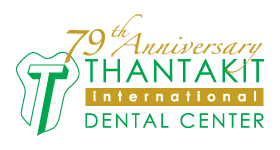Aren’t you impressed by how smooth marble sculptures or porcelain vases are? Wouldn’t you like the same cleanness and shininess from your teeth that isn’t covered by regular brushing or comprehensive brushing and cleanup from the dentist’s chair via prophylaxis or teeth cleaning procedure? Then it’s about time you learned more about teeth scaling and polishing.
Dental Cleaning versus Teeth Polishing
There are key differences between dental cleanings and teeth scaling. Dental cleanings involve removing stuff on your teeth that has built there over time, which includes plaque or soft, sticky bacteria-infested film. Teeth scaling and polishing, meanwhile, involves removal of hardened calcium deposits (tooth colored or brown to black) known as calculus or tartar.
Where does all this calcium come from? It’s actually from your saliva and your daily calcium intake. Saliva bathes your mouth and delivers calcium to your teeth (among many other substances) to keep them strong and protected.
The downside to calcium is when there’s excessive amounts of it on your teeth, resulting in deposits that could result in gum inflammation, the alternation of your bite, or difficulty brushing and flossing away parts of your teeth as they’re fused together by these deposits.
It can even lead to periodontal disease, wherein diseased parts of your dentin and/or cementum might end up on the surface of your tooth root, which could in turn threaten to inflame the root. Your gums can also be affected, leading to immense pain and infection that could spread to the rest of your mouth.
How Teeth Polishing Is Done
There are multiple steps needed to accomplish teeth scaling:
- Ultrasonic Instrument: One of the most effective ways to debride and polish your teeth is through a tool that uses tickling vibrations and a spray of cooling mist to knock down large pieces of tartar.
- Fine Hand Tools: After the larger pieces of calculus are removed, the dentist can switch to fine hand tools called curettes and scalers to remove the remaining deposits while at the same time giving your teeth polish.
- Polishing Hand Piece: The term prophylaxis comes from the prophy paste used to brush onto your teeth with a slow-speed device with a soft spinning rubber cup on its end to give them that sparkling finish.
- Fluoride: A fluoride application is then put onto your teeth (with flavors such as watermelon, mint, chocolate, bubblegum, and more) to keep your teeth healthy and strong.
Consequences of Not Polishing Your Teeth
If you don’t polish tartar-infected teeth, this could lead to several other costly dental procedures depending on the severity of the tartar.
- Root Planing or Debridement: This is a type of teeth polishing for the surface of the tooth root or the part of your tooth that’s nearest to the gums.
- Root Canal or Endodontic Procedure: Once there’s root inflammation, you’ll have to remove the inflamed root (thus killing the tooth) then fill the root canal with an inert substance to save it.
- Tooth Extraction and/or Dental Replacement: You also have the option to remove a tooth with an inflamed root then put in a dental bridge, dentures, or a tooth implant where you can insert a crown over it.
Chalky calcium powder and tartar can build up on your teeth like limescale in a kettle or pipe. If you allow them to accumulate, this will result in the right condition for bacteria to thrive within your gums, resulting in pockets of infection. This is the reason why teeth scaling and polishing is important.
Thantakit International Dental Center is Thailand’s longest established dental center. Situated in Bangkok, our clinic is renowned across the world as a destination for world-class dentistry, with most of our patients flying to us from Australia.
Please contact us today and get a FREE dental consultation.













